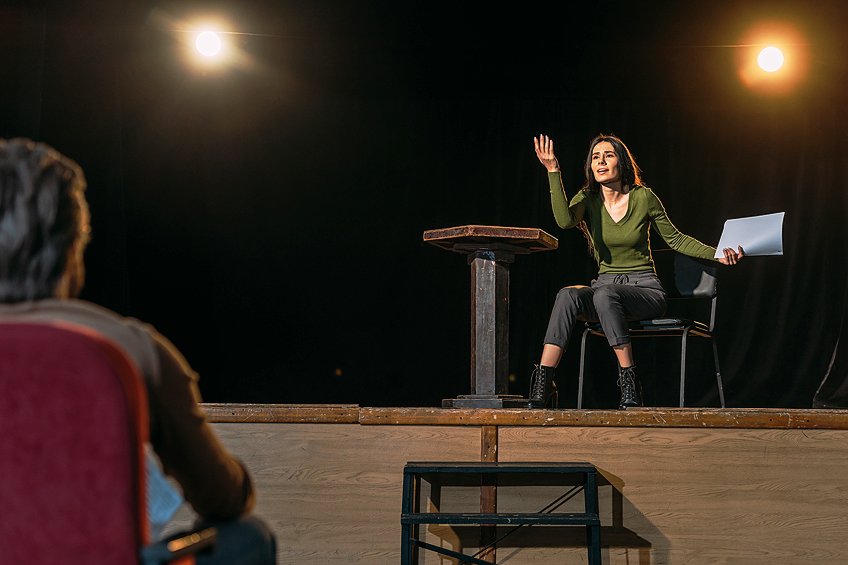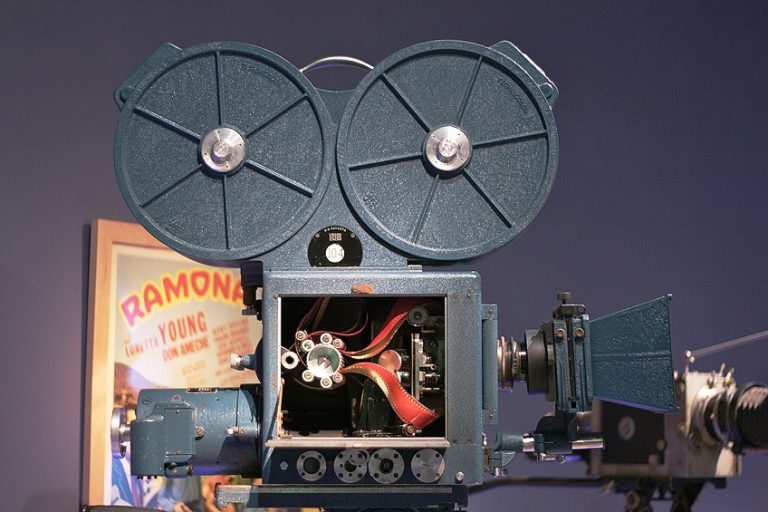How to Write a Screenplay – Mastering the Art of Screenwriting
Embarking on a journey of crafting a screenplay is much like sculpting a world where imagination meets narrative prowess. Understanding how to write a screenplay for a movie is delving into the artistry of storytelling, where each scene is a brushstroke, and dialogue becomes the symphony that orchestrates emotions. Knowing how to write a movie script entails a harmonious fusion of structure, character development, and visual storytelling, akin to a maestro composing a masterpiece. To illustrate the intricacies, let us explore a script writing example that unveils the alchemy behind weaving a compelling tale for the silver screen.
Table of Contents
- 1 What Is a Screenplay?
- 2 The Elements of a Screenplay
- 2.1 Scene Headings: Setting the Stage
- 2.2 Subheaders: Organizing the Journey
- 2.3 Action Lines: Painting Cinematic Imagery
- 2.4 Dialogue: The Heartbeat of Characters
- 2.5 Extensions: Enriching the Dialogue
- 2.6 Transitions: Seamlessly Bridging Scenes
- 2.7 Formatting: The Harmonious Canvas
- 2.8 Studying Script Writing Examples: A Lesson in Craft
- 3 How to Write a Movie Script
- 4 Spec Script vs. a Shooting Script
- 5 Tips and Tricks for First-Time Writers
- 6 Frequently Asked Questions
What Is a Screenplay?
A screenplay epitomizes the heart and soul of a movie, a meticulously crafted manuscript that serves as the cinematic blueprint for translating words into a visual symphony. It encapsulates the narrative essence of a story, laying the groundwork for directors, actors, and the production crew to transform words into a living, breathing world on screen. Understanding what a screenplay truly embodies illuminates the intricate artistry behind storytelling in film, merging imagination, structure, and character development into a cohesive tapestry.
At its core, writing a screenplay is an art form that encapsulates more than mere dialogue and actions; it is a medium where emotions reverberate and visual landscapes spring to life.
It is the skillful amalgamation of captivating characters, compelling dialogue, and well-structured scenes that drive the narrative forward. Picture it as a roadmap through the intricate maze of storytelling, where every turn and twist is meticulously crafted to engage, entertain, and captivate the audience. A screenplay is not merely a document but an invitation into a world brimming with possibilities. It encapsulates the vision of the writer, providing a canvas for imagination to flourish and creativity to soar. It is the backbone of any movie, offering a glimpse into the director’s lens long before the cameras start rolling.

Consider a script writing example – a windsor into the process that showcases the meticulous care in crafting each scene, honing the character’s voices, and orchestrating the rhythm of the story. It is the alchemy of transforming thoughts and ideas into a visual spectacle, marrying the art of storytelling with the technical intricacies of filmmaking.
Ultimately, a screenplay is the pulse of a film, a living document that evolves from the writer’s mind to the screen, encapsulating the magic that captivates audiences worldwide.
The Basic Structure of Any Screenplay
The basic structure of a screenplay is the skeletal framework upon which the entire cinematic narrative is built. Much like the foundation of a grand architectural marvel, the screenplay structure is a meticulously crafted blueprint that guides the audience through a captivating journey of storytelling. Essentially, the screenplay typically adheres to a three-act structure, a time-tested formula that organizes the narrative into distinct segments. The first act, often referred to as the setup, introduces the audience to the world of the story. Here, characters are introduced, the setting is established, and the central conflict or inciting incident is unveiled. This phase sets the stage, inviting viewers into the story’s universe and igniting their curiosity.
Following the setup is the second act – the confrontation.
This act delves deeper into the conflict, presents obstacles, and propels the story forward. Tension rises as characters confront challenges, face adversities, and experience pivotal turning points. Rising action, character development, and the escalation of stakes keep the audience engaged and invested in the unfolding narrative. Finally, the third act, known as the resolution or conclusion, brings the story to its climax and eventual resolution. These conflicts and subplots converge, leading to the climax – the most intense and pivotal moment in the story. Loose ends are tied up, and the audience finds closure as the story reaches its conclusion, whether it is a satisfying resolution or a cliffhanger that sets the stage for a sequel.

This three-act structure serves as a guiding principle, offering a framework for writers to craft engaging stories. However, within this structure lies room for creativity, allowing for variations, subversions, and innovative storytelling techniques that captivate audiences and leave a lasting impact. It is within this carefully constructed structure that the magic of storytelling thrives, breathing life into characters, evoking emotions, and transporting viewers into the realms of imagination and wonder.
The Elements of a Screenplay
Knowing how to write a screenplay for a movie is a meticulous art form, woven with technical intricacies that breathe life into a narrative canvas. These technical elements serve as the architectural blueprint, guiding directors, actors, and crew members through the cinematic journey.
Each element – be it the vivid imagery of action lines, or the emotive resonance of dialogue – contributes to the symphony of storytelling in a screenplay.
Scene Headings: Setting the Stage
Scene headings, also known as sluglines, provide a GPS for the narrative landscape. They succinctly detail the location, time of day, and whether the scene takes place indoors (INT.) or outdoors (EXT.), offering a clear roadmap for the unfolding story. For instance, a scene heading may be presented as “INT. STEVEN’S BEDROOM – NIGHT.”

Subheaders: Organizing the Journey
Subheaders, such as “EXT.” for exterior scenes or “INT. for exteriors, segment the script into manageable units. They act as signposts, guiding the reader and director through shifts in location, time, and atmosphere.
Action Lines: Painting Cinematic Imagery
Action lines are the vibrant strokes that paint the visual imagery of a scene. They encapsulate character movements, expressions, and environmental details, providing a vivid portrayal that fuels the imagination of filmmakers and fuels the visual storytelling.

Dialogue: The Heartbeat of Characters
Dialogue is the lifeblood of characters, infusing them with depth and personality. Each line must carry purpose, propelling the plot, revealing emotions, and nurturing connections. Its rhythm, authenticity, and subtext are essential in engaging audiences and bringing characters to life.
Extensions: Enriching the Dialogue
Extensions, often used after character names in dialogue, offer additional context or direction for how lines are delivered. Whether it is “V.O.” for voice overs or “O.S.” for off-screen, these notations enhance the nuances of delivery without intruding on the dialogue itself.

Transitions: Seamlessly Bridging Scenes
Transitions are the seamless bridges that link scenes, maintaining the story’s flow and emotional continuity. Utilizing cuts, fades, or other transitions ensures a smooth progression, keeping the audience engaged in the narrative rhythm.
Formatting: The Harmonious Canvas
Adhering to industry-standard formatting is paramount – it ensures clarity and consistency throughout the screenplay. Utilizing specialized software such as Final Draft or Celtx streamlines the technical aspects, allowing writers to focus on the storytelling process.

Studying Script Writing Examples: A Lesson in Craft
Analyzing scripts from accomplished screenwriters serves as a beacon, shedding light on the interplay between technical elements and storytelling finesse. Script writing examples offer invaluable insights into pacing, dialogue construction, and the seamless integration of technicality with creative expression. The technical elements of a screenplay form the intricate threads that weave a compelling narrative. Mastery of scene headings, action lines, dialogue, and other nuances empowers a script to transcend words on a page, inviting filmmakers to breathe life into a captivating visual spectacle.
This fusion of technical precision with creative ingenuity lays the foundation for a screenplay that resonates with audiences, bridging the gap between imagination and cinematic enchantment.
How to Write a Movie Script
In the realm of storytelling, the allure of the silver screen remains an enduring fascination. Behind every captivating film lies an intricately woven screenplay that breathes life into characters, constructs immersive worlds, and orchestrates gripping narratives. Writing a movie script is a craft that melds creativity, structure, and storytelling finesse into a seamless tapestry that captivates audiences worldwide.

The art of screenwriting transcends mere dialogue and action; it is an alchemy that amalgamates vivid imagination with structural precision. For aspirants seeking to embark on this artistic journey or seasoned writers aiming to refine their skills, delving into the intricacies of how to write a screenplay is an invaluable pursuit.
Understanding the Key Elements of Writing a Screenwriting
At its core, a screenplay is the blueprint that guides the filmmaking process. It encapsulates the narrative vision, delineates characters, and charts the trajectory of events from inception to denouement. Yet, knowing how to write a screenplay is more than just penning lines.
It is a meticulous orchestration of elements that engage emotions, ignites the imagination, and brings forth a visual and emotional experience for the audience.
Conceptualizing a Compelling Idea
Every memorable script begins with a compelling idea that sparks the imagination. It could stem from personal experiences, historical events, or even a fleeting thought that burgeons into a grand concept. Refining this idea is akin to nurturing a seed into a flourishing tree, demanding exploration, and introspection to uncover its potential.

Structuring the Narrative
Structure forms the backbone of a screenplay. Familiarity with traditional screenplay structures such as the three-act structure or the hero’s journey aids in organizing the storyline coherently. However, innovating with non-linear narratives or unconventional structures can infuse freshness and intrigue into the script.
Crafting Engaging Characters
Characters serve as the heartbeat of a screenplay. From the protagonist grappling with inner conflicts to the antagonist embodying opposition, each character should possess depth, flaws, and arcs that resonate with the audience.
Their motivations, quirks, and vulnerabilities breathe authenticity into the narrative canvas.
Writing Compelling Dialogue
Dialogue is the vessel through which characters express their thoughts, emotions, and conflicts. Crafting authentic, impactful dialogue that rings true to each character’s voice while propelling the story forward is an art in itself. Each line must serve a purpose, revealing layers of personality or advancing the plot.

Visual Storytelling
Unlike prose, a screenplay emphasizes visual storytelling. Employing vivid imagery, dynamic action sequences, and evocative descriptions immerses the reader in the envisioned world. Mastering this visual language helps directors, cinematographers, and actors translate the written word onto the screen seamlessly.
Revising and Polishing
The process of writing a screenplay entails multiple drafts and revisions. Embracing feedback, honing the narrative structure, refining dialogue, and enhancing character development through successive drafts elevate the script’s quality.

The Journey of Writing a Screenplay
The process of writing a screenplay is akin to embarking on an odyssey, replete with twists, discoveries, and revelations. Initially, it often begins with an exhilarating rush of inspiration – a spark that ignites the creative fire within. However, this fervor must coalesce with discipline, dedication, and perseverance to traverse the arduous yet rewarding path of screenwriting. Research becomes an ally, providing insights into diverse genres, historical contexts, or scientific principles for authenticity and depth.
Writers immerse themselves in reading scripts, studying diverse cinematic styles, and observing human behavior to infuse realism into their narratives.
Mind Mapping and Outlining
Before delving into the writing process, outlining the storyline, character arcs, and pivotal plot points provides a roadmap. Mind mapping tools or traditional outlines help in organizing thoughts and maintaining coherence throughout the script.

Writing Rituals and Discipline
Establishing a writing routine, whether it is setting aside specific hours daily or finding a conducive environment, fosters consistency. Some writers swear by rituals, be it a cup of coffee or a walk, as a precursor to their writing process, priming their minds for creativity.
Tackling Writer’s Block
The bane of every writer’s existence, encountering creative blockades is an inevitable part of the writing journey. Techniques such as freewriting, changing scenery, or seeking inspiration from diverse sources often aid in overcoming this hurdle.

Seeking Feedback and Iterating
Sharing the script with trusted peers and mentors, or joining writing groups fosters constructive criticism. Embracing feedback, discerning valuable insights, and iteratively refining the screenplay enhances its depth and impact.
Professional Formatting and Presentation
Adhering to industry-standard formatting guidelines (e.g., using software like Final Draft or Celtx) ensures professionalism. Proper formatting streamlines the reading experience for producers, directors, and actors, enhancing the script’s marketability.

Embracing the Evolving Landscape
The landscape of filmmaking and storytelling continually evolves, embracing new technologies, diverse narratives, and global perspectives. With streaming platforms expanding the horizons of content consumption, writers find themselves in a milieu ripe with opportunities to explore unconventional narratives, diverse characters, and thought-provoking themes.
Adapting to Change
Flexibility and adaptability are paramount in navigating this dynamic landscape. Embracing technological advancements, understanding audience preferences, and exploring emerging storytelling mediums like virtual reality or interactive narratives broaden a screenwriter’s horizons.
Collaboration and Networking
The collaborative nature of filmmaking necessitates fostering relationships within the industry. Attending festivals, workshops, or utilizing online platforms facilitates networking opportunities, potentially opening doors for collaboration or script visibility.
Embracing Diversity and Inclusivity
The call for diverse voices and inclusive narratives reverberates within the industry. Embracing multicultural perspectives, representing underrepresented communities authentically, and portraying multifaceted characters enrich the storytelling tapestry. However, one must make sure to not inject these elements into their script just for the sake of diversity and inclusivity, but rather ensure that these elements serve the plot and enrich their characters with greater depth and understanding.
Writing a movie script encapsulates the essence of storytelling in its purest form – a fusion of imagination, craftsmanship, and emotional resonance.
Understanding the nuances of how to write a screenplay goes beyond following a formula; it encompasses an amalgamation of creativity, structure, and unwavering dedication. Mastering the art of writing a screenplay demands continual exploration, honing the craft, and embracing the evolving landscape of filmmaking. With each keystroke, writers wield the power to create worlds, evoke emotions, and immortalize narratives that resonate across generations – a testament to the enduring allure and transformative potential of the written word on the silver screen.
Spec Script vs. a Shooting Script
When writing a screenplay, understanding the nuanced difference between a spec script and a shooting script is similar to that of deciphering two distinct facets of the same storytelling prism. Both are indispensable components in the filmmaking process, each serving a unique purpose in bringing a screenplay to life on the silver screen.

Spec Script: The Genesis of Creative Vision
A spec script, short for speculative screenplay, is the initial incarnation of a writer’s creative vision. It embodies the essence of storytelling, unfettered by the constraints of production logistics or directional input. Writer’s craft spec scripts with unbridled creativity, focusing solely on the art of storytelling and the nuances of character development, dialogue, and plot progression. The hallmark of a spec script lies in its potential – a captivating narrative that entices producers, directors, or studios to invest in the story, recognizing its commercial or artistic merit.
As such, writing a spec script demands a mastery of the craft, an ability to weave compelling narratives, and a keen understanding of engaging characters and story arcs.
How to Write a Spec Script: The Journey of Creative Liberation
Writing a spec script involves embracing creative liberation while adhering to certain industry standards. Aspiring screenwriters embarking on this journey begin with a captivating idea that burgeons into a fully-fledged narrative. They immerse themselves in the world they create, constructing vivid characters, delineating story arcs, and fashioning dialogue that resonates with authenticity.

Structural coherence and engaging storytelling become paramount in a spec script. While adhering to the fundamentals of screenwriting – such as proper formatting and a strong narrative structure – writers are free to explore unconventional storytelling techniques, non linear narratives, or experimental formats that serve the story’s essence.
Shooting Script: The Blueprint for Filmmaking
In contrast, a shooting script serves as the pragmatic blueprint for actualizing the screenplay on screen. Once a spec script is greenlit for production, it undergoes meticulous revisions, incorporating directional inputs, technical considerations, and logistical details essential for filming. A shooting script transforms the narrative into a practical tool for the director, cinematographer, and the entire film crew.
It includes detailed scene descriptions, camera directions, specific shot requirements, and technical annotations crucial for seamless production execution.
How to Write a Shooting Script: Balancing Vision and Practicality
Writing a shooting script entails a meticulous balance between preserving the essence of the original narrative vision and accommodating the practicalities of filmmaking. It involves collaboration with the director and other key stakeholders to streamline the script for production. Translating the spec script into a shooting script involves refining dialogue, streamlining scenes, and incorporating logistical details without compromising the core narrative. Clarity and precision become paramount, ensuring that every department involved in production interprets the script uniformly.
Key differences between a spec script and a shooting script lie in their purposes and stages within the filmmaking process.
While a spec script is the creative genesis – capturing the heart and soul of the story – a shooting script refines that vision into a practical roadmap for actualizing the screenplay into a cinematic masterpiece. Understanding the dichotomy between a spec script and a shooting script is integral for screenwriters navigating the intricate landscape of filmmaking. Writing a spec script demands creative fervor and storytelling finesse, while crafting a shooting script necessitates a pragmatic fusion of creative vision and logistical feasibility.

Both scripts are indispensable cogs in the cinematic machinery, each playing a pivotal role in transforming an idea into a captivating visual narrative that enthralls audiences worldwide. Mastering the art of crafting both types of scripts empowers screenwriters to traverse the continuum from imaginative inception to tangible cinematic fruition.
Tips and Tricks for First-Time Writers
Embarking on the journey of a screenwriter as a first-timer is akin to navigating uncharted waters – a blend of exhilaration, creativity, and the labyrinthine nature of storytelling. For novices stepping into this world of cinematic storytelling, here are invaluable tips and tricks that serve as guiding stars through the intricate cosmos of screenwriting.
Study the Craft
Before delving into writing a screenplay, immerse yourself in the world of screenwriting. Read scripts across diverse genres, study story structures, dissect character arcs, and observe narrative techniques employed by seasoned screenwriters. Understanding the nuances of the craft lays a solid foundation for your own storytelling endeavors.

Start With a Strong Idea
Every compelling screenplay begins with a captivating idea. Whether it is an intriguing concept, a fascinating character, or a thought-provoking theme, let your imagination roam freely. Explore various ideas, and when one resonates deeply, delve deeper to flesh out its potential as the cornerstone of your screenplay.
Perseverance and Resilience
Screenwriting is a journey fraught with challenges. Rejections, creative blocks, and setbacks are inevitable. Cultivate resilience and perseverance, staying committed to your craft despite obstacles. Every setback is an opportunity to learn and grow as a writer.
Experiment and Learn
Embrace experimentation in your storytelling. Explore various genres, writing styles, or narrative structures. Embracing versatility enhances your skills and broadens your creative repertoire.
Write Regularly and Set Goals
Establish a writing routine and stick to it. Set achievable writing goals, whether it is a daily word count, completing scenes within a specific timeframe, or outlining chapters. Consistency nurtures discipline and fosters continuous improvement in your writing.

Show, Don’t Tell
Master the art of visual storytelling. Instead of narrating events, allow the actions, dialogue, and visual descriptions to convey the story. Utilize vivid imagery and compelling dialogue to engage the audience’s imagination and evoke emotions.
Develop Engaging Characters
As mentioned previously, characters can be seen as the beating heart of any screenplay. Craft multi-dimensional characters with distinct voices, motivations, and arcs that resonate with the audience. Infuse depth, flaws, and relatable traits into your characters, making them memorable and integral to the story.

Embrace Feedback and Revision
Be open to feedback from peers, mentors, or writing groups. Constructive criticism helps refine your screenplay. Embrace revisions as an opportunity to enhance character development, strengthen plot points, and refine dialogue for a more polished script.
For first-timers, the journey into the realm of screenwriting is both exhilarating and demanding. These tips and tricks serve as guiding beacons, empowering novice writers to navigate the intricacies of storytelling, structure, and character development. Embrace the learning curve, stay dedicated to honing your craft, and let your passion for storytelling illuminate your path toward becoming a formidable screenwriter.
Frequently Asked Questions
What Is the Basic Structure of a Screenplay?
A screenplay typically follows a three-act structure: setup, confrontation, and resolution. The setup introduces the characters, the world, and the central conflict. The confrontation develops the conflict, presents obstacles, and builds tension. The resolution resolves the conflict, tying up loose ends and providing closure.
How Long Should a Screenplay Be?
A standard feature film screenplay is typically around 90 to 120 pages. Each page roughly translates to a minute of screen time. However, this can vary and different genres or specific screenplay formats might have different page-length expectations.
How Do I Write Compelling Characters?
Compelling characters have depth, unique traits, and relatable motivations. Develop their backstories, aspirations, fears, and flaws, and ensure that they undergo growth or change throughout the story. Authentic dialogue and actions that reflect their personalities also contributes to their depth.
Duncan completed his diploma in Film and TV production at CityVarsity in 2018. After graduation, he continued to delve into the world of filmmaking and developed a strong interest in writing. Since completing his studies, he has worked as a freelance videographer, filming a diverse range of content including music videos, fashion shoots, short films, advertisements, and weddings. Along the way, he has received several awards from film festivals, both locally and internationally. Despite his success in filmmaking, Duncan still finds peace and clarity in writing articles during his breaks between filming projects.
Duncan has worked as a content writer and video editor for artincontext.org since 2020. He writes blog posts in the fields of photography and videography and edits videos for our Art in Context YouTube channel. He has extensive knowledge of videography and photography due to his videography/film studies and extensive experience cutting and editing videos, as well as his professional work as a filmmaker.
Learn more about Duncan van der Merwe and the Art in Context Team.
Cite this Article
Duncan, van der Merwe, “How to Write a Screenplay – Mastering the Art of Screenwriting.” Art in Context. January 10, 2024. URL: https://artincontext.org/how-to-write-a-screenplay/
van der Merwe, D. (2024, 10 January). How to Write a Screenplay – Mastering the Art of Screenwriting. Art in Context. https://artincontext.org/how-to-write-a-screenplay/
van der Merwe, Duncan. “How to Write a Screenplay – Mastering the Art of Screenwriting.” Art in Context, January 10, 2024. https://artincontext.org/how-to-write-a-screenplay/.









